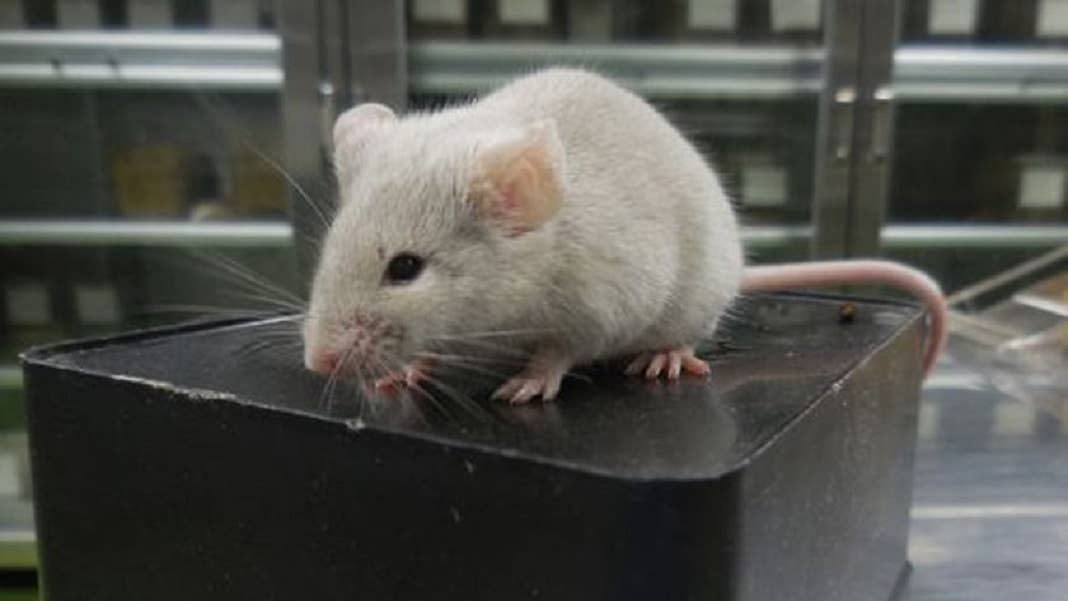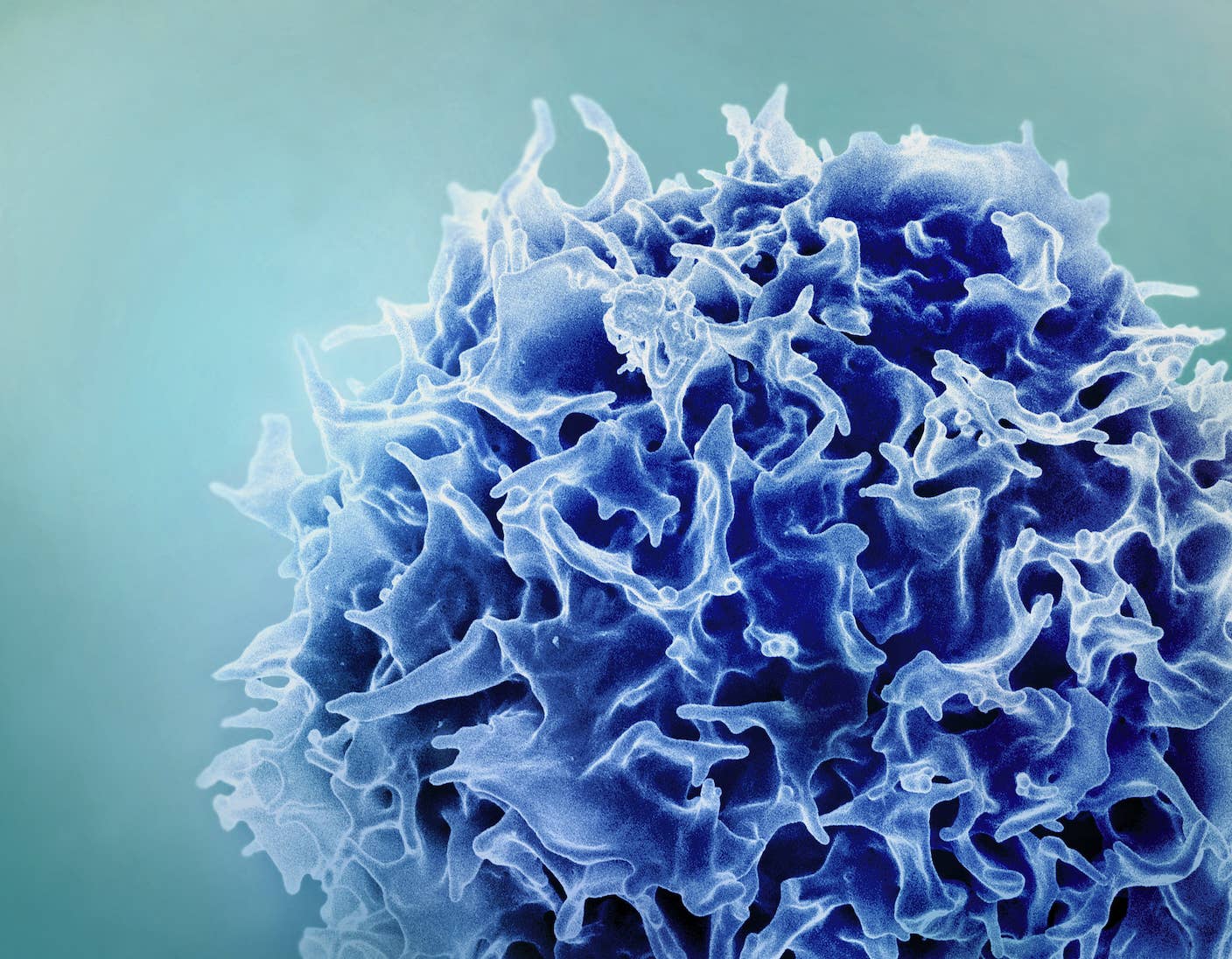Mice With Two Dads Were Born From Eggs Made Out of Male Skin Cells

Share
Seven mice just joined the pantheon of offspring created from same-sex parents—and opened the door to offspring born from a single parent.
In a study published in Nature, researchers described how they scraped skin cells from the tails of male mice and used them to create functional egg cells. When fertilized with sperm and transplanted into a surrogate, the embryos gave rise to healthy pups, which grew up and had babies of their own.
The study is the latest in a decade-long attempt to rewrite reproduction. Egg meets sperm remains the dogma. What’s at play is how the two halves are generated. Thanks to iPSC (induced pluripotent stem cell) technology, scientists have been able to bypass nature to engineer functional eggs, reconstruct artificial ovaries, and give rise to healthy mice from two mothers. Yet no one has been able to crack the recipe of healthy offspring born from two dads.
Enter Dr. Katsuhiko Hayashi at Kyushu University, who has led the ambitious goal to engineer gametes—sperm and egg—outside the body. His solution came from a clever hack. When grown inside petri dishes, iPSC cells tend to lose bundles of their DNA, called chromosomes. Normally, this is a massive headache because it disrupts the cell’s genetic integrity.
Hayashi realized he could hijack the mechanism. Selecting for cells that shed the Y chromosome, the team nurtured the cells until they fully developed into mature egg cells. The cells—which started as male skin cells—eventually developed into normal mice after fertilization with normal sperm.
“Murakami and co-workers’ protocol opens up new avenues in reproductive biology and fertility research,” said Drs. Jonathan Bayerl and Diana Laird at the University of California, San Francisco (UCSF), who were not involved in the study.
Whether the strategy will work in humans remains to be seen. The success rate in mice was very low at just a snippet over one percent. Yet the study is a proof of concept that further pushes the boundaries of the reproductive realm of possibilities. And perhaps more immediately, the underlying technology can help tackle some of our most prevalent chromosomal disorders, such as Down syndrome.
“This is a very important breakthrough for the generation of eggs and sperm from stem cells,” said Dr. Rod Mitchell at the MRC Centre for Reproductive Health, University of Edinburgh, who was not involved in the study.
A Reproductive Revolution
Hayashi is a long-time veteran at transforming reproductive technologies. In 2020, his team described genetic alterations that help cells mature into egg cells inside a dish. A year later, they reconstructed ovary cells that nurtured fertilized eggs into healthy mouse pups.
At the core of these technologies are iPSCs. Using a chemical bath, scientists can transform mature cells, such as skin cells, back into a stem-cell-like state. iPSCs are basically biological playdough: with a soup of chemical “kneading,” they can be coaxed and fashioned into nearly any type of cell.
Because of their flexibility, iPSCs are also hard to control. Like most cells, they divide. But when kept inside a petri dish for too long, they rebel and either shed—or duplicate—some of their chromosomes. This teenage anarchy, called aneuploidy, is the bane of scientists’ work when trying to keep a uniform population of cells.
But as the new study shows, that molecular rebellion is a gift for generating eggs from male cells.
X Meets Y and…Meets O?
Let’s talk sex chromosomes.
Most people have either XX or XY. Both X and Y are chromosomes, which are large bundles of DNA—picture threads wrapped around a spool. Biologically, XX usually generates eggs, whereas XY normally produces sperm.
But here’s the thing: scientists have long known that both type of cells start from the same stock. Dubbed primordial germ cells, or PGCs, these cells don’t rely on either X or Y chromosomes, but rather on their surrounding chemical environment for their initial development, explained Bayerl and Laird.
In 2017, for example, Hayashi’s team transformed embryonic stem cells into PGCs, which when mixed with fetal ovary or testes cells matured into either artificial eggs or sperm.
Here, the team took on the harder task of transforming an XY cell into an XX one. They started with a group of embryonic stem cells from mice that shed their Y chromosomes—a rare and controversial resource. Using a glow-in-the-dark tag that grabs only onto X chromosomes, they could monitor how many copies there were inside a cell based on light intensity (remember, XX will shine brighter than XY).
Be Part of the Future
Sign up to receive top stories about groundbreaking technologies and visionary thinkers from SingularityHub.


After growing the cells for eight rounds inside petri dishes, the team found that roughly six percent of the cells sporadically lost their Y chromosome. Rather than XY, they now only harbored one X—like missing half of a chopstick pair. The team then selectively coaxed these cells, dubbed XO, to divide.
The reason? Cells duplicate their chromosomes before splitting into two new ones. Because the cells only have one X chromosome, after duplication some of the daughter cells will end up with XX—in other words, biologically female. Adding a drug called reversine helped the process along, increasing the number of XX cells.
The team then tapped into their previous work. They converted XX cells into PGC-like cells—the ones that can develop into egg or sperm—and then added fetal ovary cells to push the transformed male skin cells into mature eggs.
As the ultimate test, they injected sperm from a normal mouse into the lab-made eggs. With the help of a female surrogate, the blue-sky experiment produced over a half-dozen pups. Their weights were similar to mice born the traditional way, and their surrogate mom developed a healthy placenta. All of the pups grew into adulthood and had babies of their own.
Pushing Boundaries
The tech is still in its early days. For one, its success rate is extremely low: only 7 out of 630 transferred embryos lived to be full-grown adults. With a mere 1.1 percent chance at succeeding—especially in mice—it’s a tough sell for bringing the technology to male human couples. Although the baby mice seemed relatively normal in terms of weight and could reproduce, they could also harbor genetic or other deficiencies—something that the team wants to further investigate.
“There are big differences between a mouse and the human,” said Hayashi at an earlier conference.
That said, reproduction aside, the study may immediately help to understand chromosomal disorders. Down syndrome, for example, is caused by an extra copy of chromosome 21. In the study, the team found that treating mouse embryonic stem cells harboring a similar defect with reversine—the drug that helps convert XY to XX cells—rid the mice of the extra copy without affecting other chromosomes. It’s far from being ready for human use. However, the technology could help other scientists hunt down preventative or screening measures for similar chromosomal disorders.
But perhaps what’s most intriguing is where the technology can take reproductive biology. In an audacious experiment, the team showed that cells from a single male iPSC line can birth offspring—pups that grew into adulthood.
With the help of surrogate mothers, “it also suggests that a single man could have a biological child…in the far future,” said Dr. Tetsuya Ishii, a bioethicist at Hokkaido University. The work could also propel bioconservation, propagating endangered mammals from just a single male.
Hayashi is well aware of the ethics and social implications of his work. But for now, his focus is on helping people and deciphering—and rewriting—the rules of reproduction.
The study marks “a milestone in reproductive biology,” said Bayerl and Laird.
Image Credit: Katsuhiko Hayashi, Osaka University
Dr. Shelly Xuelai Fan is a neuroscientist-turned-science-writer. She's fascinated with research about the brain, AI, longevity, biotech, and especially their intersection. As a digital nomad, she enjoys exploring new cultures, local foods, and the great outdoors.
Related Articles

Single Injection Transforms the Immune System Into a Cancer-Killing Machine

New Gene Drive Stops the Spread of Malaria—Without Killing Any Mosquitoes

New Immune Treatment May Suppress HIV—No Daily Pills Required
What we’re reading